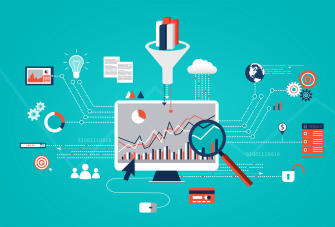How to Categorize Expenses for Small Business
If you’re a new business owner, you likely have a rough understanding of business expenses, tax write-offs, and other financial matters. However, many entrepreneurs do not know how to record and categorize these expenses.
To help you understand this process, we’ll explain the purpose of business expenses and how you can categorize them.
Why track business expenses?
No matter if you have a large or small company, track business expenses is crucial. Without proper bookkeeping, you will not have an accurate record of your finances.
To give you an example, how can you price a product if you don’t know how much it cost you to purchase it?
In addition to improving your bookkeeping, tracking business expenses is a critical part of filing taxes. The government understands that your small business has operating costs and does not want to tax these expenses. If you fail to account for these expenses when filing taxes, you could end up overpaying the government a large amount of money.
What are business expenses?
According to the Canada Revenue Agency, business expenses are “any reasonable current expense you paid or will have to pay to earn business income." [1]
While this definition may seem confusing or vague, this term is easy to explain. An ordinary expense is something that a business would regularly pay for. For example, a restaurant will ordinarily pay for packaging like delivery containers and bags.
Similarly, a necessary expense is something helpful and appropriate for the business. For example, a hotel may pay for high-speed internet because it helps improve their service offering.
That being said, some expenses are nearly universal for all businesses. While this list is not exhaustive, it will give you an idea of the type of categories to include in your list.
Some common business expenses include:
- Advertising
- Building/vehicle maintenance
- Employee benefits
- Legal and professional service
- Licenses and permits
- Office supplies
- Payroll and salary
- Rent/mortgage
- Telephone/Internet
- Utilities
Tips to categorize expenses for your small business
All businesses operate differently and thus will have unique expenses. If you run a takeout restaurant, you will have quite different expenses than a car wash or flower shop.
For this reason, you cannot use a generic template to characterize your small business expenses. Instead, you will need to make sense of all costs specific to your business.
The sooner you start tracking your business expenses, the more accurate your books and tax filings will be. Read over the following tips to get started on categorizing your small business expenses.
1. Review your current expenses
To start identifying your key spending categories, you want to look over what you are already spending money on. You should be able to find this information from bank records, receipts, bookkeeping tools, and more. Using these sources, you can quickly see your top three or four categories and start grouping items.
Then moving forward, you can easily categorize purchases under these groups.
2. Track all purchases
If you struggle to complete the first step, then you may need to improve your record keeping. All purchases need to be accounted for; otherwise, how do you plan to list your expenses on your taxes?
To start, consider implementing these practices:
- Keep receipts: If your employees make company purchase, make sure they always give you a receipt.
- Issue company credit cards: Many credit cards automatically categorize purchases, making your bookkeeping process a tad easier. On top of this, they record transaction details in the event receipts are lost.
- Update records daily: Add all expenses to your records by the end of each day. This way, receipts and other notes don’t get lost under a stack of papers.
3. Use the right accounting software
Making sense of all your financial records is a challenge, and using outdated technology only makes this task harder. With up-to-date bookkeeping tools, you can take the headache out of accounting and easily categorize your business expenses.
Modern bookkeeping programs like Sage and QuickBooks offer loads of features like digital receipt storage, cloud access, and employee time tracking.
4. Upgrade to a modern point of sale system
Lastly, consider how important your POS system is for your business. If you run a store, restaurant, or other customer-focused business, the chances are that you rely heavily on your POS.
By upgrading your system, you can get deeper access to your business and track expenses on a detailed level. For example, Epos Now POS systems help you track key items like:
- Labor costs
- Inventory expenses
- Returns/Refunds
On top of this, upgrading to a new POS system improves several other aspects of your business. From 24/7 remote access and cloud data storage to automated stock takes and reporting tools, you get everything you need to succeed.



